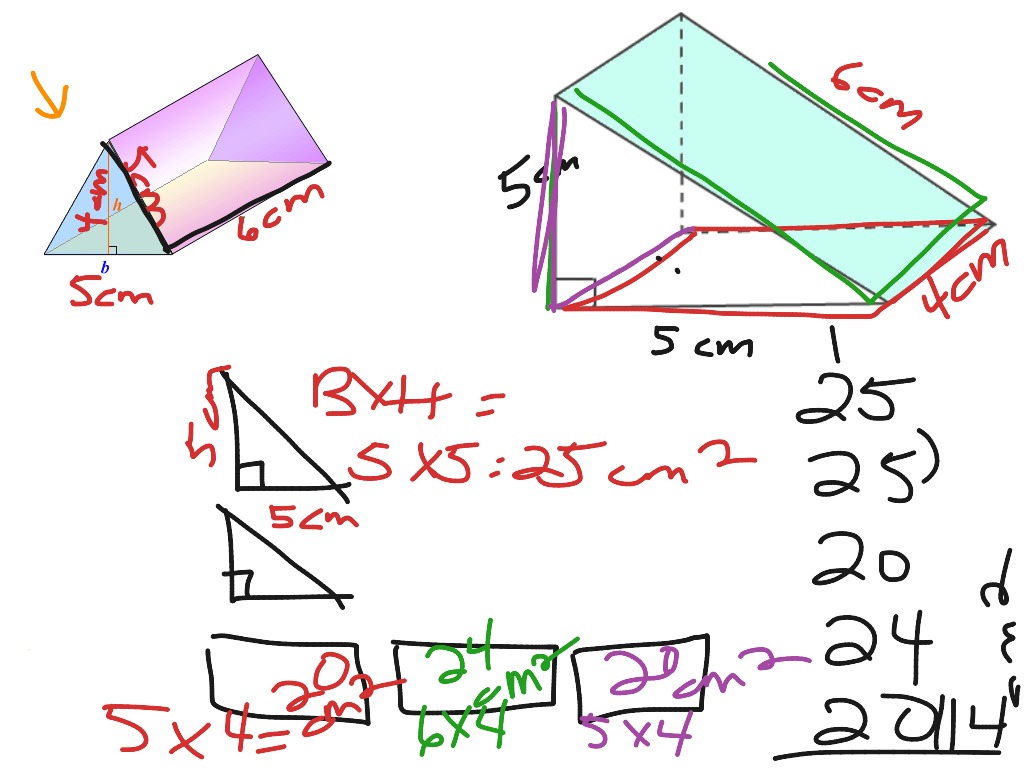

And it’s a prism because the rest of the faces or the sides is what we can call them are rectangles. The bases, the parallel faces, are triangles. So we have- that this is a triangular prism. Hint: you can draw the net of the shape to help you. The area of the rectangular prism is 94 square centimeters.Find the surface area of this triangular prism. So we can calculate the surface area of the prism using the surface area of a parallelepiped formula as, Solution: The prism is in the shape of rectangular parallelopiped. Therefore, a minimum 1350 square inches of aluminium foil is required to cover the satellite.Įxample 3: Find the surface area of a rectangular prism as shown in the figure. Total surface area of satellite = 450 + 900 So,Īreas of two bases\(=2\times a^2\) Īreas of four lateral faces\(=4\times a^2\) To calculate the area of a satellite using the prism surface area formula we calculate the bases and lateral areas and add them. Therefore, the amount of aluminium foil required to cover the satellite is equal to the surface area of the cube. What is the minimum amount of aluminium foil required to fully cover the satellite? The surface area of the prism is 84 square meters.Įxample 2: A cube shaped satellite has a side length of 15 inches. Surface area of prism = Area of two faces + lateral surface area The area of base\(=\frac\times 3\times 4\) Īrea of lateral faces = 3 × 6 + 5 × 6 + 4 × 6 Then we calculate the areas of the bases and the lateral surfaces separately. So, the summation of the areas of the two bases and the three lateral faces can be calculated for a triangular prism as,Ĭheck out Volume of triangular prism calculatorįind the surface area of the prism as shown in this diagram.įirst imagine the prism is opened as shown in the image. There are two triangular opposite faces called the bases and the three lateral sides are rectangular. Hence with this experiment time Newton proved that with the use of a prism that light is a combination of multiple rays of coloured light.Ī triangular prism has five faces. At this point in his experiment, he observed that all the colored rays recombined and formed a beam of white light.

In the next step, he placed a prism upside down in front of the color spectrum. He observed that the light broke into seven multicolor light beams and made a band like a rainbow. Then he placed a glass prism in between the beam of sunlight. He darkened the room and made a hole in his window. In 1665, Sir Isaac Newton performed an experiment with light and a prism.

Water droplets in the atmosphere behave like prisms in this case.

A rainbow of seven colors that is visible after it rains is also an example of the dispersion of light. This type of splitting of light using a prism is called the dispersion of light. T he prism also has the ability to split white light into its constituent spectral colors. It has flat and transparent or polished surfaces that can refract or reflect the beam of light. Traditionally the optical prism is only referred to as the triangular prism which has a triangular base and all the sides are rectangular. In geometry or even science, a prism primarily refers to the optical prism. The prism is generally made up of glass, fluorite or acrylic, etc. An optical prism indicates a transparent three-dimensional optical element or object. The prism primarily refers to the optical prism. In mathematics the prism is a very special three dimensional object.


 0 kommentar(er)
0 kommentar(er)
